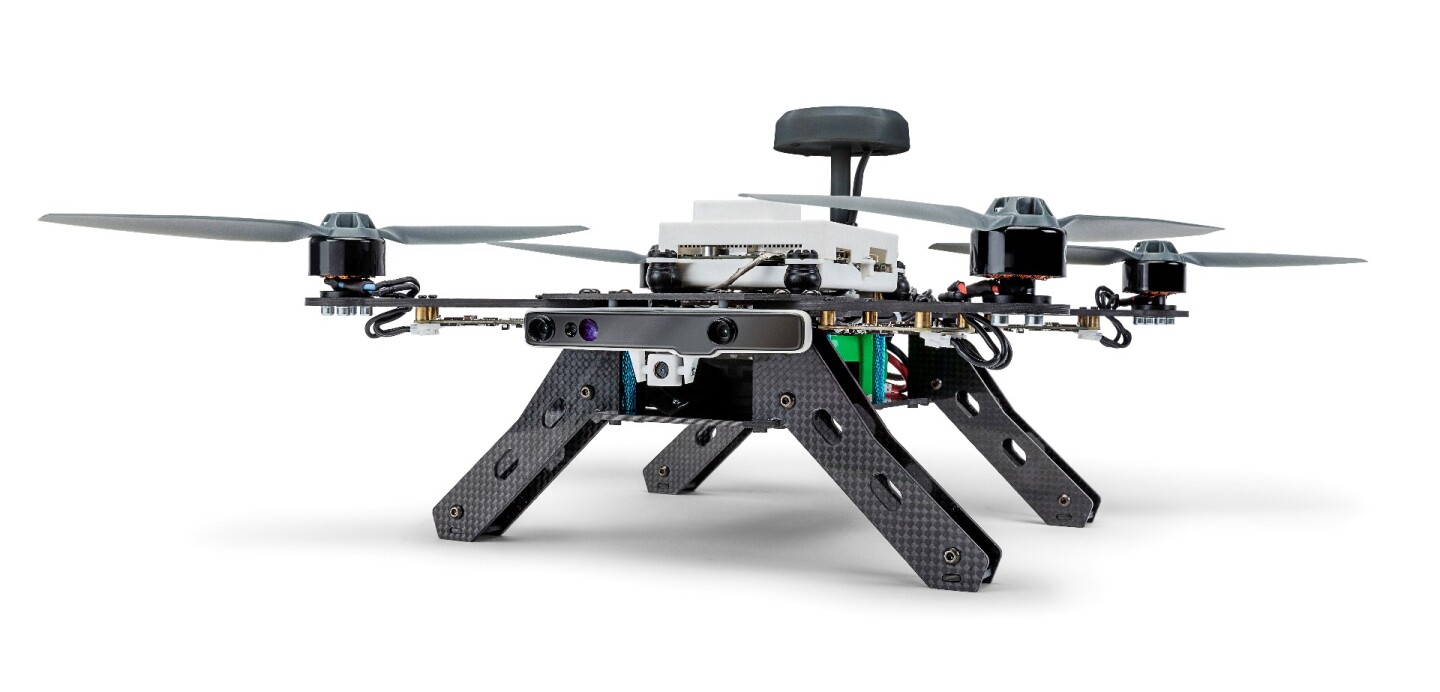Intel has dabbled in drones in the past, building impressive obstacle avoidance software and even claiming the world record for the most drones to be flown in synchronized flight. But now the company is looking to be a driving force behind the technology's rise, announcing a ready-to-fly drone called Aero that really is a software development kit designed to push the boundaries of unmanned flight.
Intel announced the Aero drone at its Developer Forum in San Francisco this week, alongside an all-in-one VR headset and its new tiny Joule computer. Aero is a fully assembled quadcopter that runs on the newly-announced Aero compute board, a playing card-sized device powered by an Atom quad-core processor that handles storage, communications and input/outputs.

This combines with an optional Vision Accessory Kit, which includes an 8-megapixel camera, VGA camera and Intel's RealSense R200 camera, to give software developers flexibility to explore potential applications for drones. Aero will also come equipped with Intel's RealSense Technology, which uses the drone's cameras, processor and sensors to create a model of a 3D environment.
Intel first showed off this technology at CES this year onboard a Typhoon H, a hexacopter built by electric aircraft-maker Yuneec. Obstacle avoidance technology is something that has popped up on some consumer models, such as the DJI Phantom 4, but with the ability to detect obstacles and plot alternative courses RealSense sounded like it might be a step up.
A planned demonstration is one thing, (even if it did involve dodging falling trees) but picking out obstacles in the real world is another. The good news is that the Typhoon H with RealSense is now available to buy at US$1,899, so we will soon learn how this technology stacks up with consumers at the joysticks.
The Aero drone also comes preloaded with AirMap, an airspace management app that tells pilots where it is safe to fly and notifies them of things like wildfires and weather patterns. Intel says that the Aero drone will be available at the end of the year, but there is no word yet on pricing. The Aero compute board on can be preordered separately for $399.
Source: Intel









![The Ti EDC [everyday carry] Wrench is currently on Kickstarter](https://assets.newatlas.com/dims4/default/0ba225b/2147483647/strip/true/crop/4240x2827+0+3/resize/720x480!/quality/90/?url=http%3A%2F%2Fnewatlas-brightspot.s3.amazonaws.com%2F59%2Fb2%2F6a6fdd0348a8bfdad88bbcefec53%2Fdsc03572.jpeg)